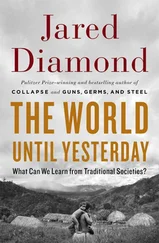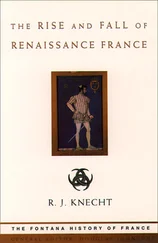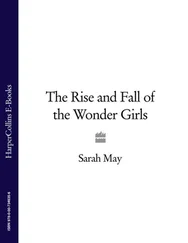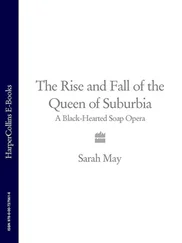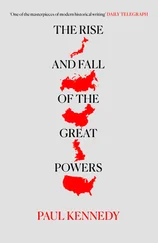Jared Diamond - The rise and fall of the third chimpanzee
Здесь есть возможность читать онлайн «Jared Diamond - The rise and fall of the third chimpanzee» весь текст электронной книги совершенно бесплатно (целиком полную версию без сокращений). В некоторых случаях можно слушать аудио, скачать через торрент в формате fb2 и присутствует краткое содержание. Год выпуска: 1991, ISBN: 1991, Издательство: RADIUS, Жанр: Биология, на английском языке. Описание произведения, (предисловие) а так же отзывы посетителей доступны на портале библиотеки ЛибКат.
- Название:The rise and fall of the third chimpanzee
- Автор:
- Издательство:RADIUS
- Жанр:
- Год:1991
- ISBN:0-09-174268-4
- Рейтинг книги:4 / 5. Голосов: 1
-
Избранное:Добавить в избранное
- Отзывы:
-
Ваша оценка:
- 80
- 1
- 2
- 3
- 4
- 5
The rise and fall of the third chimpanzee: краткое содержание, описание и аннотация
Предлагаем к чтению аннотацию, описание, краткое содержание или предисловие (зависит от того, что написал сам автор книги «The rise and fall of the third chimpanzee»). Если вы не нашли необходимую информацию о книге — напишите в комментариях, мы постараемся отыскать её.
The rise and fall of the third chimpanzee — читать онлайн бесплатно полную книгу (весь текст) целиком
Ниже представлен текст книги, разбитый по страницам. Система сохранения места последней прочитанной страницы, позволяет с удобством читать онлайн бесплатно книгу «The rise and fall of the third chimpanzee», без необходимости каждый раз заново искать на чём Вы остановились. Поставьте закладку, и сможете в любой момент перейти на страницу, на которой закончили чтение.
Интервал:
Закладка:
The first example concerns the age at which an animal first breeds and produces offspring. That age varies enormously among species: few humans are so precocious as to produce babies before the age of twelve years, while any self-respecting mouse a mere two months old can already make baby mice. Animals belonging to a species whose age of first breeding is late, like us, need to devote much energy to repair, in order to ensure that they survive to that reproductive age. Hence we expect investment in repair to increase with age at first reproduction.
For instance, correlated with our having a much later age of first reproduction than do mice, we humans age far more slowly than mice and are thus presumed to repair our bodies much more effectively. Even with plenty of food and the best medical care, a mouse is lucky to reach its second birthday, while we would be unlucky not to reach our seventy-second birthday. The evolutionary reason: a human who invested no more of his/her energy in repair than does a mouse would be dead long before reaching puberty. Hence it is more worthwhile to repair a human than a mouse.
What might that postulated extra energy expenditure of ours actually consist of? At first, our human repair capabilities seem unimpressive. We cannot regrow an amputated arm, and we do not regularly replace our skeleton, in the way that some short-lived invertebrates do. However, such spectacular but infrequent replacements of a whole structure probably are not the biggest items in an animal's repair budget. Instead, the biggest expense is all that invisible replacement of so many of your cells and molecules, day after day. Even if you spend all day every day just lying in bed, you need to eat about 1,640 calories per day if you are a man (1,430 for a woman) just to maintain your body. Much of that maintenance metabolism goes to our invisible scheduled replacement. And so I would guess that we cost more than a mouse in the respect of putting a bigger fraction of our energy into self-repair, and a smaller fraction into other purposes like keeping warm or caring for babies.
The second example I shall discuss involves the risk of irreparable injury. Some biological damage is potentially reparable, but there is also damage that is guaranteed to be fatal (for example, being eaten by a lion). If you are likely to be eaten by a lion tomorrow, there is no point paying a dentist to start expensive orthodontic work on your teeth today. You would do better to let your teeth rot and start having babies immediately. But if an animal's risk of death from irreparable accidents is low, then there is a potential payoff, in the form of increased lifespan, from putting energy into expensive repair mechanisms that retard aging. This is the reasoning by which Mercedes-owners decide to pay for lubrication of their cars in Germany and the US but not in New Guinea.
Biological analogies are that the risk of death from predators is lower for birds than for mammals (because birds can escape by flying), and lower for turtles than for most other reptiles (because turtles are protected by a shell). Thus, birds and turtles stand to gain a lot from expensive repair mechanisms, compared to flightless mammals and shell-less reptiles that will soon be eaten by predators anyway. Indeed, if one compares longevities of well-fed pets protected from predators, birds do live longer (that is, do age more slowly) than similarly sized mammals, and turtles live longer than similarly sized shell-less reptiles. The bird species best protected from predators are seabirds like petrels and albatrosses that nest on remote oceanic islands free of predators. Their leisurely life-cycles rival our own. Some albatrosses do not even breed until they are ten years old, and we still do not know how long they live: the birds themselves last longer than the metal rings that biologists began putting on their legs a few decades ago in order to age them. In the ten years that it takes an albatross to start breeding, a mouse population could have gone through sixty generations, most of which would already have succumbed to predators or old age. As our third example, let's compare males and females of the same species. We expect more potential payoff from repair mechanisms, and lower rates of aging, in that sex with the lower accidental mortality rate. For many or most species, males suffer greater accidental mortality than females, partly because males put themselves at greater risk by fighting and bold displays. This is certainly true of human males today and has probably been so throughout our history as a species—men are the sex most likely to die in wars against men of other groups, and in individual fights within a group. Also, in many species the males are bigger than the females, but studies of red deer and of New World blackbirds show that males are thereby more likely than females to die when food becomes scarce.
Correlated with this greater accidental death rate of men, men also age faster and have a higher non-accidental death rate than women. At present, women's life expectancy is about six years greater than that of men; some of this difference is because more men than women are smokers, but there is a sex-linked difference in life expectancy even among non-smokers. These differences suggest that evolution has programmed us so that women put more energy into self-repair, while men put more energy into fighting. Expressed another way, it just is not worth as much to repair a man as it is to repair a woman. I do not thereby mean to denigrate male fighting, which serves a useful evolutionary Purpose for a man: to gain wives and to secure resources for his children and his tribe, at the expense of other men and their children and tribe.
My remaining example of how some striking facts of aging become comprehensible only from an evolutionary perspective concerns the distinctively human phenomenon of survival past reproductive age, Specially past female menopause. Since transmitting one's genes to the next generation is what drives evolution, other animal species rarely survive past reproductive age. Instead, Nature programmes death to coincide with the end of fertility, because there is then no longer an evolutionary benefit to gain from keeping one's body in good repair. It is an exception in need of explanation to realize that women are programmed to live for decades after menopause, and that men are programmed to live to an age when most men are no longer busy siring babies. But the explanation becomes apparent on reflection. The intense phase of parental care is unusually protracted in the human species and lasts nearly two decades. Even those older people whose own children have reached adulthood are tremendously important to the survival of not just their children but of their whole tribe. Especially in the days before writing, they acted as the carriers of essential knowledge. Thus, Nature has programmed us with the capacity to keep the rest of our bodies in reasonable repair even at an age when the female reproductive system itself has fallen into disrepair.
Conversely, though, we have to wonder why natural selection programmed female menopause into us in the first place. It too, like aging, cannot be explained away as something physiologically inevitable. Most mammals, including human males plus chimps and gorillas of both sexes, merely experience a gradual decline and eventual cessation of fertility with age, rather than the abrupt shutdown of women's fertility. Why did that peculiar, seemingly counter-productive feature of ours evolve? Would not natural selection favour the woman who remained fertile until the bitter end?
Human female menopause probably resulted from two other distinctively human characteristics: the exceptional danger that childbirth poses to the mother, and the danger that a mother's death poses to her offspring. Recall from Chapter Three the enormous size of the human infant at birth relative to its mother: our big 7-pound babies emerging from 100-pound mothers, compared to little 4-pound gorilla babies emerging from a 200-pound gorilla mother. As a result, childbirth is dangerous to women. Especially before the advent of modern obstetrics, women often died in childbirth, whereas mother gorillas and chimps virtually never do.
Читать дальшеИнтервал:
Закладка:
Похожие книги на «The rise and fall of the third chimpanzee»
Представляем Вашему вниманию похожие книги на «The rise and fall of the third chimpanzee» списком для выбора. Мы отобрали схожую по названию и смыслу литературу в надежде предоставить читателям больше вариантов отыскать новые, интересные, ещё непрочитанные произведения.
Обсуждение, отзывы о книге «The rise and fall of the third chimpanzee» и просто собственные мнения читателей. Оставьте ваши комментарии, напишите, что Вы думаете о произведении, его смысле или главных героях. Укажите что конкретно понравилось, а что нет, и почему Вы так считаете.



